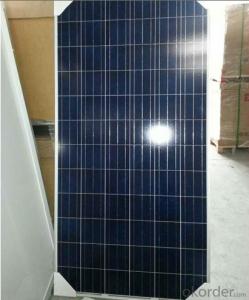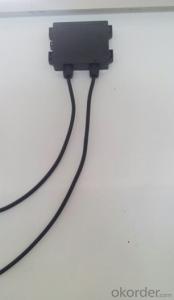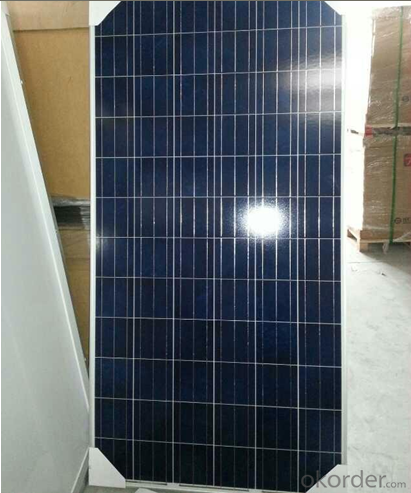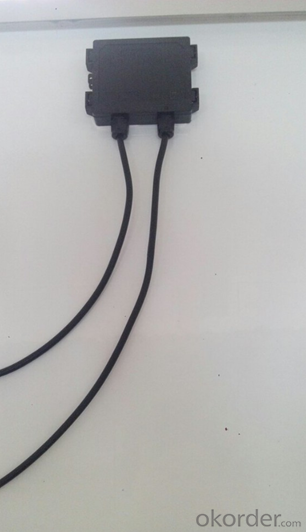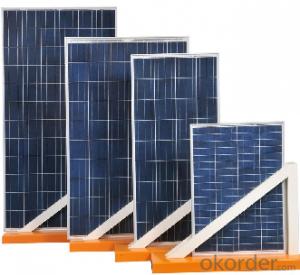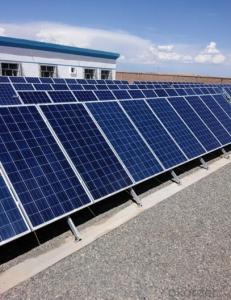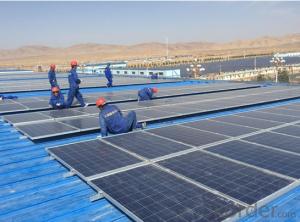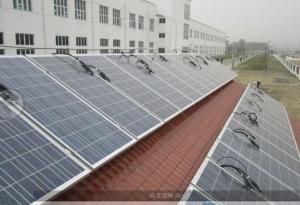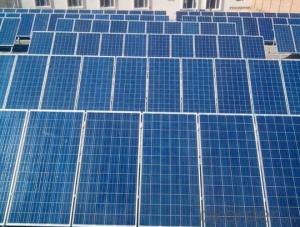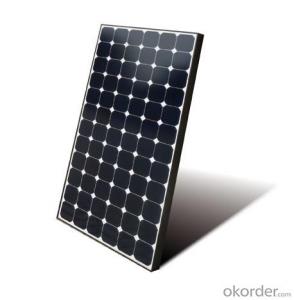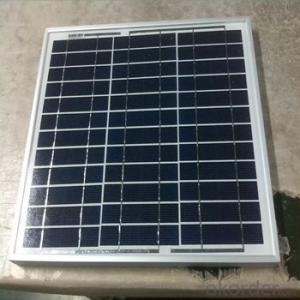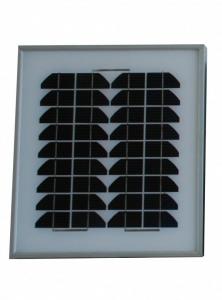10KW Poly Silicon Solar Module / 10KWatt Solar Panel with Outlet CNBM - 285W
- Loading Port:
- Qingdao
- Payment Terms:
- TT OR LC
- Min Order Qty:
- 10 set
- Supply Capability:
- 300000 set/month
OKorder Service Pledge
OKorder Financial Service
You Might Also Like
Quick Details
| Place of Origin: | China (Mainland) | Brand Name: | CNBM | Model Number: | 285W solar module |
| Material: | Polycrystalline Silicon | Size: | 1956*992*50mm | Number of Cells: | 72 |
| Max. Power: | 285W | Cell Size(mm): | 156*156 | Tolerance: | 0~3% |
| Cells Number(pcs): | 6*12 | Weight(Kg): | 25 | Max.Series Fuse Rating (A): | 15 |
| Max.System Voltage-IEC(V): | 1000 |
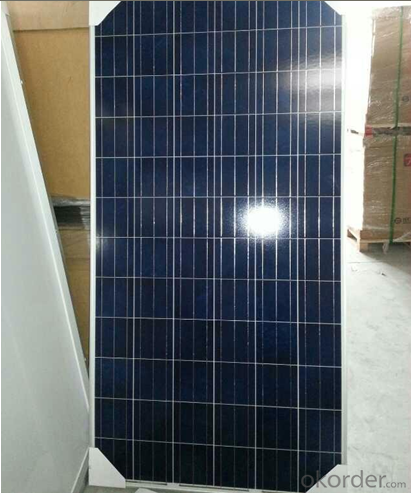
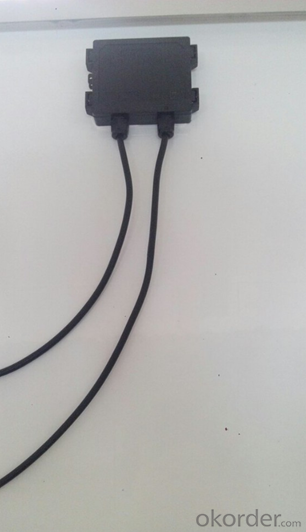
Polycrystalline Solar Module
XH250P(72)/ XH275P(72)/ XH300P(72)
Models | XH250P(72) | XH285P(72) | XH300P(72) |
Max. Power (Pmax) | 250Wp | 285Wp | 300Wp |
Optimum Operating Voltage (Vm) | 34.8V | 35.7V | 35.9V |
Optimum Operating Current (Im) | 7.18A | 7.77 A | 8.08A |
Open-circuit Voltage (Voc) | 43.8V | 35.4 V | 44.4V |
Short-circuit Current (Isc) | 8.04A | 8.24 A | 8.62A |
Cells efficiency | 14.6% | 15.8% | 16.8% |
Dimension L×W×H (mm) | 1956×992×50mm | 1956×992×50 | 1956×992×50 |
Power Tolerance (Pmax) | 0 ~ +3% | 0 ~ +3% | 0 ~ +3% |
Numbers of cells | 60pcs poly solar cell 156×156mm | 72pcs poly solar cell 156×156mm | 72pcs poly solar cell 156×156mm |
weight | 25kg | 25kg | 25kg |
Max system voltage | 1000V DC | 1000V DC | 1000V DC |
Temperature cycling range | -40℃ ~ +85℃ | -40℃ ~ +85℃ | -40℃ ~ +85℃ |
- Q: Making a solar panelI know there was a recommended wattage for the soldering iron but i cant rememberdoes anyone know?
- How To Solder Solar Cells
- Q: My house is aligned exactly North-South, so I have no roof facing South. Is it worth installing solar panels? Are there any good options for dealing with this situation?
- The trouble is that it is so expensive to have installed and as you say it will take many years before you actually start saving above what the installation cost was, I personally would not go ahead and make that sort of investment, it would be more profitable to keep the money in a building society, get the interest from it and use that to pay for your electricity but the main thing that I have against solar Panels is that unless you stay in that house for at least twenty five years you will not reach the point where you are saving and to capitalise on it you would have to stay there for many years more, so you will not have the option of moving house without losing your investment and at the moment having solar panels does not increase the value of the property, it is just a good selling point, when you buy your new house, you would probably have to start all over again and then because of the years will never live long enough to reap any benefit from it.
- Q: I have a solar energy panel that works in every room except mine. I have those severely bright, energy efficient bulbs and it doesn't work at all.What do I do? Is the bulbs really causing this? Why?
- It's giving off a good chunk of its energy as light in the range 800-00nm which the solar panel can efficiently harvest into electricity. As a lightbulb though, this energy is being wasted because you can't see light of those wavelengths!
- Q: I am interested in solar energy, but am not sure how eficiant it would be in the northwest? Any comments would be apriciated.
- Are solar panels a good thing to do for the environment? - Yes. Can you recoup the cost your investment in the solar cells/panels in any reasonable amount of time in Seattle? - most likely - not. I know it's been a miserable spring in Seattle, but, I think we got 3 sunny days last month. With the number of cloudy/rainy days here, solar will only really benefit you in June, July, August and September. There are two kinds of solar panels - electric or water based. The electrics - photovoltaics - are costly to purchase and it's difficult to store the electricity once you make it. A water heater type solar panel initially cost less and can provide some benefit even on partly cloudy days. I have even seen instructions on how to build your own (if you are frugal and handy) I just do not think it's worthwhile in Seattle - if it was Denver or Phoenix we were talking about - then it would be a different story.
- Q: Can solar panels increase the value of commercial properties?
- Yes, solar panels can increase the value of commercial properties. Installing solar panels can lower operating costs by reducing electricity bills and often generate additional income through selling excess energy back to the grid. This can make the property more attractive to potential buyers or tenants and result in higher property values. Additionally, solar panels are seen as a sustainable and environmentally-friendly investment, which can further enhance the property's value in today's eco-conscious market.
- Q: If i wanted to get a 5 KW solar Panel does it mean it produces 5KW a day/hour/year!?!?i need 2555.35KW a week and i don't know how many or what kind of solar panels i need.Please somebody help me
- First, learn the difference between kilowatts and kilowatt hours, and all shall be made clear.
- Q: My Grandfather just purchased a cheap solar panel kit for his ranch that could not muster enough power to run his mini fridge.He has two 6 volt batteries running positive to negative and would like to add more batteries. Probably 2volt. How would he go about hooking up the other batteries and what kind of wire or coil should he use.Also, I saw on youtube a guy recommending a lead-acid battery from walmart for under $20. I was just going to go to ecology and just pick up some used batteries but I may be wrong.Any help for a first timer might help me and my gramps out will be appreciated.Thank you
- Solar charger employs solar energy to supply electricity to devices or charge batteries. They are generally portable. Solar array: electrical device consisting of a large array of connected solar cells Solar Panel is a group of solar cells arranged into a panel that can be installed onto a flat surface. The panel captures sunlight and converts it into DC power.
- Q: How do solar panels affect the property's energy management strategy?
- Solar panels can have a significant impact on a property's energy management strategy. By harnessing the sun's energy, solar panels generate clean and renewable electricity, reducing the property's dependence on traditional power sources. This can lead to lower energy costs, increased energy independence, and a reduced carbon footprint. Solar panels also provide a stable and reliable source of energy, allowing for better energy planning and management. Additionally, excess energy generated by solar panels can be stored or sold back to the grid, providing additional financial benefits. Overall, solar panels play a crucial role in shaping and optimizing a property's energy management strategy.
- Q: Can solar panels be installed on a museum or cultural institution?
- Yes, solar panels can be installed on a museum or cultural institution. In fact, many museums and cultural institutions have embraced renewable energy and are installing solar panels to reduce their carbon footprint and energy costs. These panels can be placed on rooftops, parking lots, or even integrated into the building's architecture, providing a sustainable energy source while preserving the aesthetic appeal of the institution.
- Q: I want to build a standalone wifi repeater -- powered by the sun. The problem is how much solar power and how big of a battery?net draw 4.5v @ 0.66A with loadnet draw 4.5v @ 0.60A no loadI'm assuming the best choice would be a 6v battery with a a couple diodes in series to induce ~.5v drop. Then, I need something to charge it -- I found 2v 6w solar chargers in the automotive section of Sears and 6v 2w solar chargers in the marine section of Dick's Sporting Goods.How many solar panels and what capacity batteries should I use? Is this the best method or should I use a voltage regulator and go with 2v batteries?I need this to be as cheap and simple as possible...
- You won't get very far with THAT lash-up. First of all.. WHY would you want to use diodes to drop the voltage.. they DRAW CURRENT and that is something you don't have to spare. That draw of (660 ma) comes out to just under 3 watts. You DO KNOW that you can get that 4.5 Volts by driving a NAIL into the THIRD CELL in a 6 Volt wet cell battery... right? and for what you are doing, you have more current available with a 6 volt battery than a 2 volt battery. Anyway, you could use two 6 Volt batteries and tap them at the 4.5 volt point then tie them in parallel, but you could still use the 6 volt solar panel to charge them. Trying to use an inverter is just an exercise in futility.. With TWO of the LARGEST DEEP CYCLE BATTERIES you can buy at AutoZone running in Parallel and being charged by solar panels.. if you hook a 75 watt inverter to them, they will go flat in about 4 hours of use during the night. This is not rocket science. Back when cars were changing over from 6 volts to 2 volts, I powered up more than one 6 volt car radio off a 2 volt battery... when you grow up as poor as I did.. you get inventive. I later used the same trick on the 24 volt electrical systems the Jeeps were using, to power up clandestine repeaters in places where no repeaters should have been. About 25 years ago I was living in the Denver area and built up a 0 watt 2 meter repeater on a split channel and took it up to Mt. Evans during the summer and hid it in a pile of rocks. I used tone control, so we were the only ones using it and, as I said, It was a split channel.. so it wasn't on a regular repeater channel. That thing was still running when I moved from the Denver area about 3 years later and for all I know, It's still up there on Mt. Evans (find the Brittlecone Pines and look towards that small peak about a mile to the west)
Send your message to us
10KW Poly Silicon Solar Module / 10KWatt Solar Panel with Outlet CNBM - 285W
- Loading Port:
- Qingdao
- Payment Terms:
- TT OR LC
- Min Order Qty:
- 10 set
- Supply Capability:
- 300000 set/month
OKorder Service Pledge
OKorder Financial Service
Similar products
Hot products
Hot Searches
Related keywords
